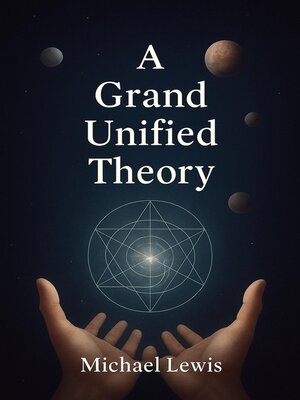
Sign up to save your library
With an OverDrive account, you can save your favorite libraries for at-a-glance information about availability. Find out more about OverDrive accounts.
Find this title in Libby, the library reading app by OverDrive.



Search for a digital library with this title
Title found at these libraries:
| Library Name | Distance |
|---|---|
| Loading... |
Summary of A Grand Unified Theory
This book is an intellectual provocation that refuses to accept the convenient placeholders of mainstream physics—randomness, dark matter, and dark energy—as final answers. Instead, it demands rigorous scrutiny, fresh questions, and a relentless search for the underlying mechanisms that govern reality.
At its heart, the manuscript challenges the foundational assumptions about gravity, time, entropy, and quantum uncertainty. It rejects the idea that these phenomena are mysterious black boxes or simply given facts, proposing instead that they emerge from deeper, measurable processes. Gravity, for example, is recast not as an abstract force or simple curvature of spacetime but as an emergent effect of trillions of tiny, directional alignments at the atomic and subatomic scale—a sum of micro-movements rather than a monolithic pull.
The book exposes the scientific community's over-reliance on "dark" entities to patch holes in models. It argues that dark matter and dark energy remain unproven hypotheses used to fill gaps in data rather than genuine discoveries. This skepticism is paired with a call for experimental rigor: unless these "ghost" phenomena can be observed, measured, and manipulated in controlled settings, they remain unscientific assumptions.
Central to the work is the insistence that randomness is often a mask for hidden order. The manuscript confronts the common use of randomness in physics and information theory as a fallback when theory falters, pushing instead for a view of the universe as lawful at every level. Quantum phenomena, long considered intrinsically uncertain, are reinterpreted as the product of field interference, curvature effects, or undiscovered correlations rather than true randomness.
Entropy is reframed from a vague notion of disorder to a measurable curvature in state-space, something that can, in principle, be tracked, understood, and even engineered. This approach integrates thermodynamics, information theory, and geometry into a unified conceptual framework.
The work also explores the role of angular momentum and rotation as fundamental drivers—not mere consequences—of cosmic structure, particle creation, and gravitational effects. Instead of treating these as secondary, the book suggests that these dynamics might be the missing link to explaining anomalies in galaxy formation, quantum coherence, and even large-scale cosmological expansion.
In computation and information, the manuscript sees every logical operation as a physical event involving real energy shifts and curvature changes. This outlook collapses the divide between abstract math and physical reality, viewing computation, AI, and consciousness as emergent properties of energy-driven, field-connected systems.
The narrative doesn't shy away from the struggle of inquiry. Early chapters show a raw, confessional style revealing the author's journey through doubt, confusion, and stubborn determination. Later chapters sharpen arguments and mathematical models, culminating not in tidy conclusions but in deliberate unfinished business. The final chapter challenges readers to test, attack, and try to break the new framework—because truth emerges from struggle, not from received wisdom.
Finally, the book pays homage to the overlooked genius of Emmy Noether, whose work on symmetry and conservation provides a crucial foundation for rethinking the laws of physics. Her theorem guides the approach: every law is provisional, grounded in symmetry and invariance, and must be rigorously tested and revised.







